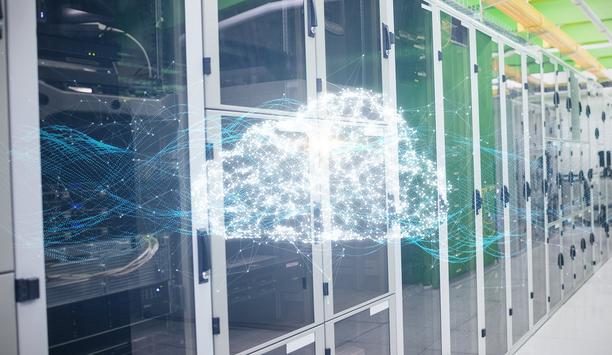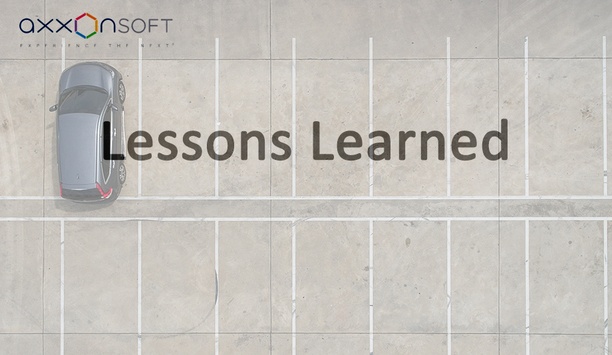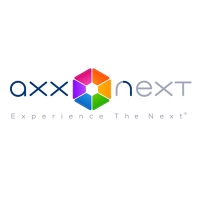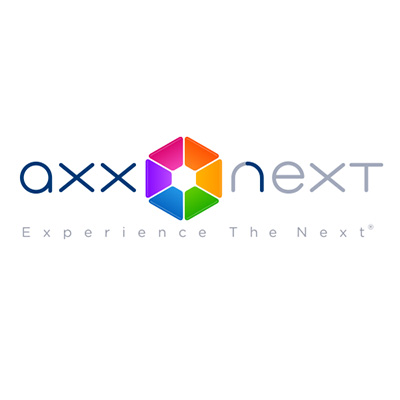AxxonSoft - Experts & Thought Leaders
White papers from AxxonSoft
Video surveillance as a service: Why are video management systems migrating to the Cloud?
DownloadLatest AxxonSoft news & announcements
Secutech Vietnam returns to the Saigon Exhibition and Convention Centre (SECC), reaffirming its position as a cornerstone event for Vietnam’s security and fire safety sectors. Running 14–16 August, 480 exhibiting brands from 17 countries and regions are showcasing the latest innovations across 13,000 sqm, including five featured pavilions and three specialised zones. Meanwhile, the show’s fringe programme presents insights and cutting-edge solutions linked directly to Vietnam’s future economic ambitions. Latest integrated video surveillance Secutech Vietnam cements its pivotal role in driving emerging growth industries Backed by strong government support, and with some 15,600 trade visitors expected to attend, Secutech Vietnam cements its pivotal role in driving emerging growth industries, while maintaining its core focus on security and fire safety. The show brings together a diverse group of exhibitors presenting the latest integrated video surveillance, intelligent key and asset control, fire detection and suppression, personal protective equipment, and cutting-edge unmanned aerial vehicles (UAVs) and robotics for disaster prevention. Goals in smart manufacturing Ms. Regina Tsai, General Manager of Messe Frankfurt (HK) Ltd – Taiwan Branch, explained: “These innovations are perfectly aligned with Vietnam’s strategic goals in smart manufacturing, digital infrastructure, and enhanced urban safety – sectors that are pivotal to the country’s future development." "This is proven by the fact we have outstanding exhibitor participation for the second year in a row, thanks in no small part to strong support by major government bodies such as the Vietnam Fire and Rescue Police Department and the Ministry of Public Security." Vietnam’s key public sectors Two display areas, namely the Fire Truck Display Area and the Police Equipment Zone, spotlight applications Tsai added: "Their attendance underscores the strategic significance of the fair as a platform for advancing national safety and technological growth.” Two display areas, namely the Fire Truck Display Area and the Police Equipment Zone, spotlight applications for some of Vietnam’s key public sectors, while the show’s pavilions and zones give buyers convenient access to several of the industry’s most well-known international suppliers. Featured pavilions and zones Japan Pavilion Korea Pavilion MIT (Made in Taiwan) Innovation Zone Singapore Pavilion UL Solutions Pavilion Special zones include: Disaster Prevention Zone Occupational Safety / PPE Zone Urban Safety Zone The show’s VIP business matching service and buyer delegations are set to increase opportunities for innovation exchange, which is a topic also brought to the fore at several of the show’s fringe events. Integral to Vietnam’s economic initiatives and growth strategy Smart Factory & Automation Seminar focuses on industrial efficiency, a priority for Vietnam’s Industry 4.0 initiative The Smart Factory & Automation Seminar focuses on driving industrial efficiency, a key priority for Vietnam’s Industry 4.0 initiative, which aims to make Vietnam one of the leading smart manufacturing and innovation hubs in Asia. This one-day seminar, co-organised by the Ho Chi Minh City Automation Association (HAuA), brings together industry experts who share practical solutions, case studies, and strategies for integrating automation, electronics, security, and fire safety technologies into smart factories. Confirmed speakers include representatives from Advantech, ESTEC Digital, Honeywell, KGS Fire & Security Singapore, M.Tech, NORD Gear, rexroth A Bosch Company, Schmersal Vietnam, TNT Technologies, and VdS. Vietnam’s Digital Infrastructure Strategy Meanwhile, the ICT & Smart Building Infrastructure Forum 2025, jointly arranged with the Ho Chi Minh Computer Association (HCA), addresses the convergence of smart building, security, automation, and ICT technologies, which aligns directly with Vietnam’s Digital Infrastructure Strategy. ICT & Smart Building Infrastructure Forum 2025, jointly arranged with the HCA, handles the convergence of Security This forum presents real-world applications demonstrating how security and fire system integrators, building management system providers, ICT vendors, and telecom operators collaborate to deliver integrated digital infrastructure. Speakers from 3ONEDATA, CAD, Dahua Technology, Hanwha Vision, KEENFINITY, Phuc Binh, Seagate Technology, Silver Sea, VNG Corporation, and VNPT will share expert insights on infrastructure intelligence, a key driver supporting Vietnam’s digital economy vision, which aims for the digital economy to account for 30% of GDP by 2030. Vietnam’s government-backed Industry 4.0 initiative Secutech Vietnam 2025’s Tech Stage further facilitates discussions on the key technologies aligned with Vietnam’s government-backed Industry 4.0 initiative, Digital Infrastructure Strategy, and digital economy goals. The stage is split into three sessions: 1. Security Session This session will showcase advanced security technologies that are essential for the growth of smart infrastructure across Vietnam. It features AI-powered video management, integrated enterprise security platforms, intelligent access and key management, as well as electric perimeter security solutions designed to enhance safety and operational efficiency. The following companies will share their unique insights: 3S System Technology, ASIS Technologies, AxxonSoft Asia, Morse Watchmans, Shanghai Gato IT, Servo Dynamics, and VIVOTEK. 2. Smart Fire Technology Session Focused on intelligent fire safety solutions for both urban and industrial environments, this session highlights technologies such as fire pumps, linear heat detection systems, modular fire and life safety platforms, and smoke/heat exhaust fans. These innovations aim to deliver early fire detection, effective emergency ventilation, and enhanced compliance with Vietnam’s safety regulations. Featured companies include: KGS Fire & Security Singapore, LGM Products, NM FIRE (S), and Phương Linh Group. 3. PPE/Disaster Prevention Session With an emphasis on the latest safety and disaster readiness products, this session is set to feature explosion-proof firefighting robots, high-endurance UAVs for surveillance and emergency response, emergency escape equipment, and premium safety footwear designed to improve workplace safety and rapid disaster response. The following companies will participate: Beijing Topsky Intelligent Equipment Group, Durasafe, Mallcom India, and VTFCTech. Held concurrently with Secutech Vietnam 2025, Fire & Safety Vietnam highlights innovations in fire prevention, rescue, and industrial safety, with SMABuilding spotlighting advancements in building automation, IoT integration, and energy efficiency. Together, these dedicated events broaden the scope of the platform, offering specialised solutions for safety, security, and smart building professionals.
AxxonSoft, a pioneer in AI-powered video management software, and Eurotech, a pioneer in edge computing solutions, are launching a strategic partnership to deliver advanced AI-enabled video surveillance solutions. AxxonSoft’s intelligent VMS This collaboration combines AxxonSoft’s intelligent video management system with Eurotech’s cybersecurity-certified ReliaCOR hardware platforms featuring the NVIDIA Jetson Orin technology for AI at the edge. In cooperation, AxxonSoft and Eurotech will provide industries requiring high-performance video surveillance and AI-driven analytics — such as smart cities, industrial automation, and critical infrastructure — with scalable, cutting-edge solutions that improve security and operational efficiency. Unlocking new possibilities in AI-driven surveillance The joint solutions integrate Eurotech’s industrial-grade edge AI hardware with AxxonSoft’s software The joint solutions integrate Eurotech’s industrial-grade edge AI hardware with AxxonSoft’s software that features AI detectors for real-time object tracking, licence plate recognition (LPR), human posture detection, and more. This ensures reliable performance in demanding environments. Key highlights of the solutions include: AI Performance: Eurotech’s NVIDIA Jetson Orin–powered hardware enables increased performance and energy efficiency at the edge. Scalability & Flexibility: The solutions can easily scale from small installations to large, enterprise-wide deployments. Enhanced Security: Eurotech’s hardware offers strong cybersecurity features, including ISASecure/IEC 62443 certifications, TPM 2.0, Secure Boot, and physical anti-tampering, all designed to deliver robust solutions that comply with global regulations such as the EU NIS2 and the US Cyber Incident Reporting for Critical Infrastructure Act. Cost Efficiency: Pre-installing AxxonSoft software on Eurotech devices using Docker containers with pre-configured settings reduces deployment time and lowers the total cost of ownership (TCO). Real-world testing and performance The integrated solutions have been rigorously tested, with impressive results. Tests on Eurotech’s hardware showed the ability to handle up to 55 video channels (720p) with AxxonSoft’s AI trackers for human and vehicle detection at 6 FPS, ensuring both accuracy and efficiency. Conclusion Together, AxxonSoft and Eurotech offer easy-to-deploy, intelligent solutions based on the advanced AxxonSoft software backed by the reliable performance of Eurotech’s hardware. This collaboration is set to transform video surveillance across industries, from smart cities to critical infrastructure, including energy, transportation, and water and wastewater management, where compliance with global regulations and robust cybersecurity are paramount.
AxxonSoft is excited to announce the release of an enhanced update to the video analytics package. This latest version introduces support for Nvidia's new Ada Lovelace microarchitecture graphics cards, significantly boosting the capabilities of the detection tools, including Neurotracker, Neurocounter, Pose Detection, PPE Detection, Fire Detection, and Smoke Detection. These advancements are designed to elevate the efficiency and performance of video analytics. Suite of new features In addition to these improvements, the update brings a suite of new features aimed at enhancing both functionality and user experience. Among the newly introduced tools are the Stopped Object Detector, Glow Detector, and VL Object Tracker, which provide greater flexibility for various implementation scenarios and task solutions. Furthermore, this update includes optimisations for Nvidia graphics card utilisation, ensuring enhanced performance of all detection tools. For comprehensive details on the release, please refer to the Release Notes DetectorPack 3.12.1 Release Notes - Axxon DetectorPack - Axxonsoft Documentation.
Insights & Opinions from thought leaders at AxxonSoft
Technology based on the cloud has become a popular trend. Most IT systems now operate within the cloud or offer cloud capabilities, and video surveillance is no exception: virtually every major hardware and software vendor offers cloud-based services. Users benefit from the cloud due to its numerous advantages, such as ease of implementation, scalability, low maintenance costs, etc. Video surveillance as a service (VSaaS) offers many choices, so there is an optimal solution for each user. However, what about integrators? For them, VSaaS is also a game-changer. Integrators are now incentivised to think about how they can maintain their markets and take advantage of the new business opportunities that the cloud model provides. Hosted video surveillance The cloud service model has drastically changed the role of an integrator. Traditionally, integrators provided a variety of services including system installation, support, and maintenance, as well as served as a bridge between vendors and end-users. In contrast, hosted video surveillance as a service requires a security system installer to simply install cameras and connect them to the network, while the provider is in direct contact with each end-user. The cloud service model has drastically changed the role of an integrator There is no end to on-premises systems. However, the percentage of systems where the integrator’s role is eliminated or considerably reduced will continue to increase. How can integrators sustain their markets and stay profitable? A prospective business model might be to become a provider of VSaaS (‘cloud integrator’) in partnership with software platform vendors. Cloud-based surveillance Some VMS vendors offer software VSaaS platforms that form the basis for cloud-based surveillance systems. Using these solutions, a data centre operator, integrator, or telecom service provider can design a public VSaaS or VSaaS in a private cloud to service a large customer. The infrastructure can be built on any generic cloud platform or data centre, as well as resources owned by the provider or client. So, VSaaS providers have the choice between renting infrastructure from a public cloud service like Amazon Web Services, Microsoft Azure, or Google Cloud or using their own or clients’ computing infrastructure (virtual machines or physical servers). Gaining competitive advantage When integrators purchase commitment use contracts for several years, they can achieve significant savings As an example, a telecom carrier could deploy VSaaS on their own infrastructure to expand their service offering for clients, gaining a competitive advantage and enhancing profits per user. Using a public cloud, a smaller integrator can host the computing infrastructure immediately, without incurring up-front costs and with no need to maintain the system. These cloud services provide scalability, security, and reliability with zero initial investment. When integrators purchase commitment use contracts for several years, they can achieve significant savings. Next, let’s examine VSaaS options available in the market from an end-users point of view. With hosted (or cloud-first, or true-cloud) VSaaS solutions, all the video feeds are transmitted directly from cameras to the cloud. Optionally, video can be buffered to SD cards installed on cameras to prevent data losses in case of Internet connection failures. Dedicated hardware bridges There are many providers of such services that offer their own brand cameras. Connecting these devices to the cloud should only take a few clicks. Firmware updates are usually centralised, so users don’t have to worry about security breaches. Service providers may offer dedicated hardware bridges for buffering video footage and secure connections to the cloud for their branded and third-party cameras. Service providers may offer dedicated hardware bridges for buffering video footage Typical bridges are inexpensive, basic NVRs that receive video feeds from cameras, record on HDD, and send video streams to the cloud. The most feature-rich bridges include those with video analytics, data encryption, etc. Introducing a bridge or NVR makes the system hybrid, with videos stored both locally and in the cloud. At the other end of the spectrum relative to hosted VSaaS, there are cloud-managed systems. Video management software In this case, video is stored on-site on DVRs, NVRs, video management software servers, or even locally on cameras, with an option of storing short portions of footage (like alarm videos) in the cloud for quick access. A cloud service can be used for remote viewing live video feeds and recorded footage, as well as for system configuration and health monitoring. Cloud management services often come bundled with security cameras, NVRs, and video management software, whereas other VSaaS generally require subscriptions. Keep in mind that the system, in this case, remains on-premises, and the advantages of the cloud are limited to remote monitoring and configuring. It’s a good choice for businesses that are spread across several locations or branches, especially if they have systems in place at each site. On-site infrastructure All that needs to be changed is the NVRs or VMS with a cloud-compatible model or version All locations and devices can be remotely monitored using the cloud while keeping most of the existing on-site infrastructure. All that needs to be changed is the NVRs or VMS with a cloud-compatible model or version. Other methods are more costly and/or require more resources to implement. Hosted VSaaS helps leverage the cloud for the highest number of benefits in terms of cost and technological advantages. In this case, the on-site infrastructure consists of only IP cameras and network equipment. This reduces maintenance costs substantially and also sets the foundation for another advantage of VSaaS: extreme and rapid scalability. At the same time, the outgoing connection at each site is critical for hosted VSaaS. Video quality and the number of cameras directly depend on bandwidth. Broadband-connected locations Because the system does not work offline, a stable connection is required to stream videos. In addition, cloud storage can be expensive when many cameras are involved, or when video archives are retained for an extended period. The hosted VSaaS is a great choice for a small broadband-connected location The hosted VSaaS is a great choice for small broadband-connected locations and is also the most efficient way to centralise video surveillance for multiple sites of the same type, provided they do not have a legacy system. Since it is easy to implement and maintain, this cloud technology is especially popular in countries with high labour costs. Using different software and hardware platforms, integrators can implement various types of VSaaS solutions. Quick remote access For those who adhere to the classic on-premises approach, adding a cloud-based monitoring service can grow their value proposition for clients with out-of-the-box capabilities of quick remote access to multiple widely dispersed sites and devices. For small true-cloud setups, there is a possibility to rent a virtual machine and storage capacity in a public cloud (such as Amazon, Google, or Microsoft) and deploy the cloud-based VMS server that can handle dozens of cameras. In terms of features, such a system may include anything from plain video monitoring via a web interface to GPU-accelerated AI video analytics and smart search in recorded footage, depending on the particular software platform. Optimising internet connection Hybrid VSaaS is the most flexible approach that enables tailoring the system to the users’ needs High-scale installations, such as VSaaS for public use or large private systems for major clients, involve multiple parts like a virtual VMS server cluster, web portal, report subsystem, etc. Such systems can also utilise either own or rented infrastructure. Some vendors offer software for complex installations of this kind, though there are not as many options as for cloud-managed systems. Finally, hybrid VSaaS is the most flexible approach that enables tailoring the system to the users’ unique needs while optimising internet connection bandwidth, cloud storage costs, and infrastructure complexity. It’s high time for integrators to gain experience, choose the right hardware and software, and explore different ways of building systems that will suit evolving customer demands in the future.
The coronavirus pandemic has brought about an unprecedented crisis for businesses and individuals. It has also created a new normal, notwithstanding the disruption to our lives, ultimately changing life as we knew it. However, our resilience as humans will ensure that we survive and become better, stronger, and more determined than ever before. As I mentioned, both businesses and individuals have struggled significantly to balance the need for safety versus survival. But at AxxonSoft, we remain committed to keeping our people safe, while ensuring that our support and commitment to our clients are not compromised. Ensuring business continuity At AxxonSoft, our vision has always been to ensure business continuity through enhanced safety and video surveillance offerings. Adhering to the COVID-19 regulations, we are prescribing to social distancing to slow the spread of the virus. As such, we are utilising this time to ensure that our service offering is optimised to afford our clients the ability to repurpose and extend their remote working viabilities. As an essential service provider, we have ensured that we are providing the right tools to our clients to comply with regulations. Our video analytics and face recognition services have no reliance on on-site control rooms and, therefore, clients’ security solutions and personal safety are not compromised. Innovation reimagined During these precarious times, our focus remains on support and service. Our development team continues to work tirelessly to ensure that you can use our software during the lockdown and have accelerated innovation to this end. While we must maintain social distancing, we can and will still be of service to our community Therefore, we are proud to present version 4.11 of the Intellect PSIM, which offers our clients a neural network-based analytical tracker which recognises specific types of objects, such as humans and vehicles. We have also equipped this version with video wall management interface, automatic object tracking and a web reporting subsystem. Behavioural analytics generates data by detecting specific postures, like crouching, shooting or any potentially dangerous scenario. Our surveillance software operates on a three-pronged approach: calibration, detection and measurement, offering a comprehensive bird’s-eye view to clients. This upgrade also upholds mandated social distancing measures and keeps any face-to-face meetings to a minimal. The silver lining is that you can even use this technology when the pandemic is over. Now that’s what I call experiencing the next with AxxonSoft! Finding solutions to the challenges Our specialist technology and frontline technical support staff will ensure that your business is protected during and post-lockdown. We will continue to ensure that we provide solutions to the new challenges that the coronavirus brings, ensuring that our clients can emerge stronger and more responsive to any changes in the future. Our surveillance software operates on a three-pronged approach: calibration, detection and measurement While we must maintain social distancing, we can and will still be of service to our community. After all, change is not just about technology but about mastering mindsets. The COVID-19 disaster has demanded that businesses embrace tech disruptions as early as possible and apply technology in imaginative ways to define the new world of work. Until next time, stay safe!
Video surveillance is commonly associated with security. But in most cases, it's used to record incidents and assist in investigations after the fact rather than prevent undesirable events. Artificial intelligence–powered video analytics is a highly promising trend that fundamentally changes the way things work. Extracting manageable data from a video stream can help recognise risky situations early on, minimising damage and, ideally, completely avoid emergencies. At the same time, AI significantly expands the areas of application of video surveillance beyond security systems. AI significantly expands the areas of application of video surveillance beyond security systems However, the hype around this new, trendy technology prevents the potential user from choosing quality solutions in a wide variety of products. This often leads to over-expectation, followed by a complete let-down. Can AI-powered video analytics really be the key to a technological breakthrough in video surveillance? We'll take a look at what the technology can do, what it can't, and where it can go from here. Technological breakthrough or just another bubble? It's often said that the video management software (VMS) market is becoming increasingly commoditised and widely available. A lot of products with similar features (or, at least, similar promises from the manufacturer) make it hard to choose. As a result, vendor names and reputations are turning into one of their primary selling points. Manufacturers have two choices available: get wrapped up in a price war and rely on cutting expenses, or offer a product that's truly innovative and revolutionary. Manufacturers have two choices available: get wrapped up in a price war, or offer a product that's truly innovative and revolutionary VMS developers who choose the second route are gravitating towards creating products that use artificial intelligence based on neural networks and deep learning. Emerging two or three years ago, the AI video analytics market is experiencing a boom in growth. This new tech wave has stirred the still, stagnant backwaters of the VMS world and gave small, ambitious developers something to be optimistic about. It seems they now have a chance to emerge as market leaders in the next few years. However, the hype around this popular trend is raising reasonable concerns among experienced security industry professionals. These concerns come from clients looking for a solution to their problems, and from suppliers building a long-term development strategy. This largely resembles another tech bubble, like the one built up around pre-AI video analytics and burst when it became clear that the promises around it were pure marketing hype. However, there are factors that indicate that AI-powered video surveillance systems aren't another bubble. The three factors The first — and the main one — comes from systems already in place on customers' sites. They fulfill the same promises made during the previous bubble by hotheads in a rush to teach the computer to analyse events in real time using a classical algorithmic approach. The second is the fact that this new technology has seen investment from not only software and cloud startups, but also established VMS developers. Even giants like Intel, which has presented a full line of neural network accelerator hardware and a set of software tools that streamlines working with them, specifically in the field of computer vision. This new technology has seen investment from not only software and cloud startups, but also established VMS developers The third factor lies in artificial intelligence's abilities. AI plays chess, drives cars, and works wonders in many other fields. Why shouldn't it be applied to video monitoring and analysis? What AI can do Just what can artificial intelligence do in video surveillance systems at this stage of development? It can't quite analyse a sequence of events and understand the "logic" of what's happening in the cameras' field of view. At least not yet. But it's probable that AI will learn to do this in the next few years. But neural network analytics can already detect, classify, and track objects very well, providing high accuracy even in busy scenes. Artificial intelligence can be used in the real world to: Detect smoke and flames for early fire warning at open areas (forest, open warehouse, parking lot, etc.) Distinguish people/vehicles from animals and other moving objects, e.g. to protect the perimeter of a nature park from poachers Distinguish a person in a helmet and protective clothing from a person without them to prevent accidents at a dangerous production facility or construction site Count objects of a specific type, e.g. cars in a parking lot, people in the sales floor, wares moving on a conveyor belt, etc. in non-security-related solutions Those are just a few examples. After training a neural network, it can tackle other, similar tasks, too. Generally, a neural network trained in specific conditions isn't replicable. In other words, it won't work as well under different conditions. On the other hand, developers have learned how to quickly train AI for the needs of a specific project. The most important requirement is having enough video footage. Somewhat apart from that is the use of neural networks in facial and automatic number-plate recognition. This is an example of reproducible neural networks (train once, deploy everywhere), which makes them more appealing commercially. If non-reproducible neural networks have only recently become economically feasible due to the rapid evolution of specialised hardware (aforementioned Intel's product, for example), then the use of AI in facial recognition and ANPR has been well established for a long time. The use of AI in facial recognition and ANPR has been well established for a long time Another kind of AI analytics that we'll explore is behaviour analytics. This function, probably more than any other, is bringing video surveillance systems closer to understanding what's happening on camera. Its potential is vast. How behaviour analytics works From a technical point of view, behaviour analytics combines artificial intelligence with a classic algorithmic approach. A neural network trained on a multitude of scenarios can determine the position of the bodies, heads, and limbs of humans in the camera's field of view. The algorithm outputs an array of data containing descriptions of their poses. Conditions can be set for data to detect a specific pose, such as raised hands, prostrated or crouching persons. Developers can use this to quickly create new detection tools to identify potentially dangerous behavior specified by a government or business client. There's no need for additional training of the neural network. How behaviour analytics can be deployed Someone crouched down next to an ATM could be a technician, CIT guard, or burglar. Bank security should be notified in any of the cases. A person in shooter position, together with a bank employee or cashier with their hands raised could indicate a robbery. The system can be configured to automatically send alerts with a surveillance snapshot to the police so they can assess the threat and take action if needed. It's vital that the police receive the alert, even if the employee is unable to activate the alarm. In many cases, attention should be directed to a prostrate individual. This could be somebody who needs immediate help, or it could be someone sleeping in an inappropriate public place, for example, a 24/7 ATM space. Behavioural analytics can also be used to ensure workplace safety. For example, tracking whether employees are holding the handrails when using the stairs at a manufacturing facility or a construction site. What now? Behaviour analytics can be deployed wherever your clients' imagination takes them. With this feature, practically any pose that indicates potentially dangerous behaviour can be detected. Timely response to an alarm helps avoid material damages or, in other situations, casualties. Practically any pose that indicates potentially dangerous behaviour can be detected An area of potential development for behaviour analytics is the ability to analyse a sequence of poses by the same person or a combination of poses and relative positions of several individuals. That will be the next level of evolution in AI's use in video surveillance: moving from "detecting" to "understanding" behaviour in real time. In its most basic form, this type of analytics can be deployed to detect deviations from the search procedure in correctional facilities when a person being inspected must assume a pre-defined sequence of poses. A more advanced form allows it to detect any kind of abnormal behaviour, such as a brawl breaking out in a public space. Ideally, behaviour analytics can predict dangerous situations based on nearly imperceptible cues gleaned from collected statistics and a Big Data analysis. At the moment, this sounds like pure fantasy, but what seemed like whimsy not too long ago is now a reality with AI. It's already beaten humans in chess and the game of Go (Weiqi). Will artificial intelligence be able to outplay humans at charades one day? It's entirely possible that we'll soon see for ourselves.
One system, one card
DownloadAligning physical and cyber defence for total protection
DownloadUnderstanding AI-powered video analytics
DownloadEnhancing physical access control using a self-service model
DownloadHow to implement a physical security strategy with privacy in mind
Download

























